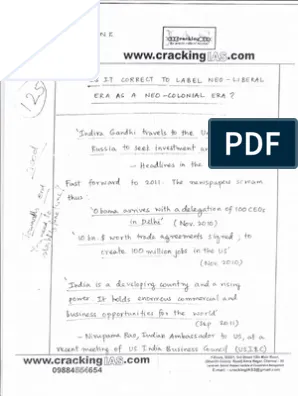- Home
- Prelims
- Mains
- Current Affairs
- Study Materials
- Test Series
 Latest News
Latest News
Martand Sun Temple
- It is a Hindu temple located near the city of Anantnag in the Kashmir Valley of Jammu and Kashmir.
- It is dedicated to the Sun God. Martand is another Sanskrit synonym for Surya.
- It was built by King Lalitaditya Muktapida around the 8th Century CE. Lalitaditya Muktapida was the third ruler of the Karkota Dynasty.
- Features:
- It has a unique architecture where local Kashmiri style is blended with the architectural styles of Gupta, Chinese, Gandhara, Roman, and Greek.
- The temple is located on top of a plateau and has been constructed entirely out of stone.
- It covers an area of 32,000 square feet.
- It stands in the middle of a large courtyard with 86 fluted columns. The courtyard is connected to the main shrine, where Sun God’s idol was installed.
- The construction of the main shrine was such that during most of the days’ time, especially during sunrise and sunset, the rays would directly fall on the idol.
- The central shrine, or vimana, stands tall at around 60 feet. It features intricate carvings and sculptures that depict various Hindu gods and goddesses.
- There are 84 smaller shrines around the main Sun Temple. They are lined along the perimeter of the complex.
- The temple is believed to have been demolished by Sultan Sikandar Shah Miri, who ruled Kashmir from 1389 to 1413.
|
Lalitaditya Muktapida
- Lalitaditya was born in the year of 699 AD as the third son of Durlabhak-Pratapaditya of kashmir.
- He was from the Nagvanshi Karkota Kayastha Dynasty of Kashmir.
- Karkota Kayastha families were mainly serving in the army of the kings of Kashmir since decades. They were known for their remarkable courage in the battlefield.
- The Kings of Kashmir had given them the title Sakhasena for their immense contribution.
- Lalitaditya’s birth name was Muktapida and his older brothers were Chandrapida and Tarapida.
- Muktapida took over the Kingdom of Kashmir in the year 724 AD.
- It was the same time, when the western invasion had begun in India and the Arabs had already occupied the province of swat, multan, peshawar and the Kingdom of Sindh.
- The Arab king Mohammad Bin Qasim, the Arab ruler was already threatening to occupy Kashmir and central India.
- He fought the daradas, kabhojas and bhuttas of ladakh who were under Tibetan rule.
- Lalitaditya himself led the army into the war defeating all Kings and established control over the regions of Ladakh.
- The alliance between Lalitaditya and Yashovarman defeated the Arabs from entering Kashmir.
- He later invaded Turkestan via Kabul. Lalitaditya acquired most of the places in the west and south of India starting from Rashtrakutas in Maharashtra, Pallavas and Kalinga in the southern part.
- He also extended his kingdom to central China after defeating the Chinese. After which he was compared with Alexander the great.
- The Kashmir Kingdom gained enormous wealth and Lalitaditya utilized the wealth to build massive infrastructure in Kashmir, construction of temples were taken up and Kashmir saw extensive development under Lalitaditya.
- Lalitaditya was a very liberal King, though he was a strong follower of Hindu tradition, he respected all religions. He is said to be a very compassionate ruler who responded to people’s voices.
- In the year 760 AD, the Lalitaditya era came to an end by his sudden death.
|
Kashmiri Temple Architecture
|










 General Studies
General Studies